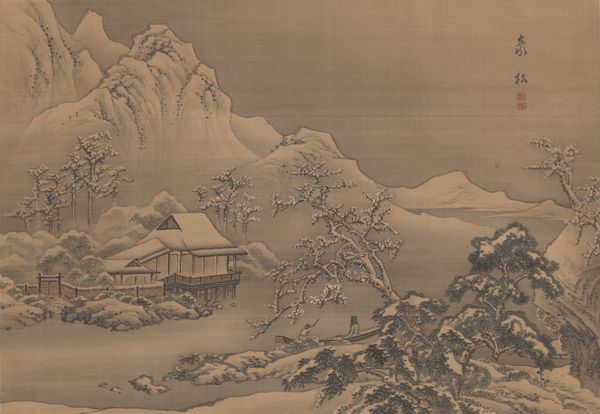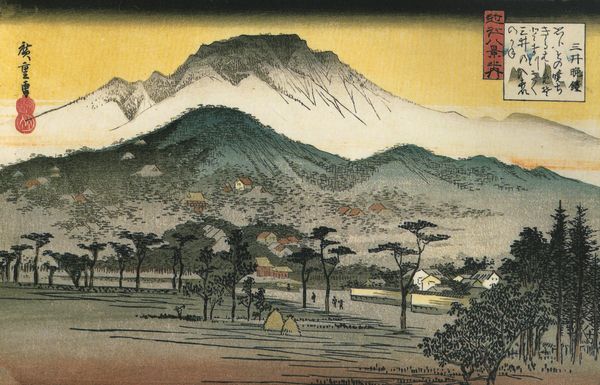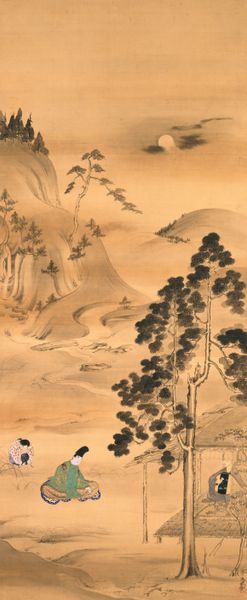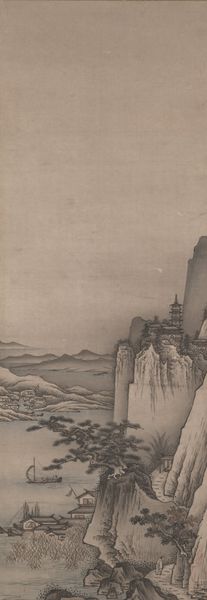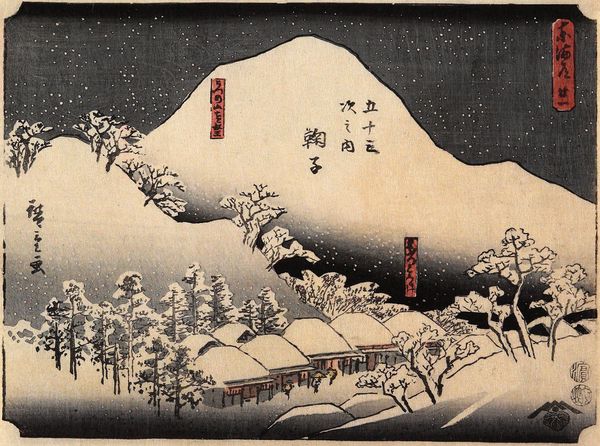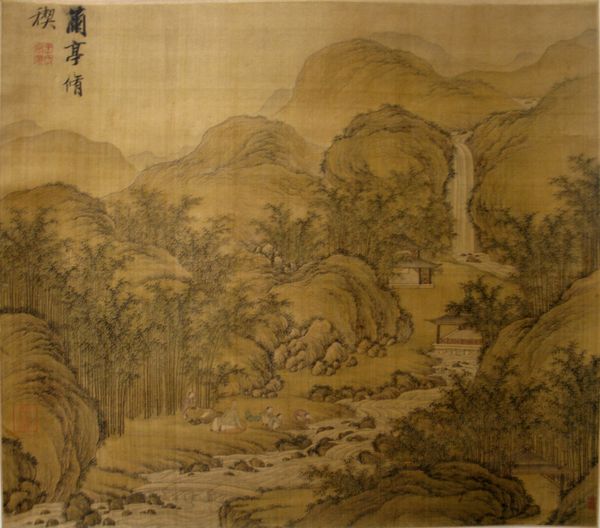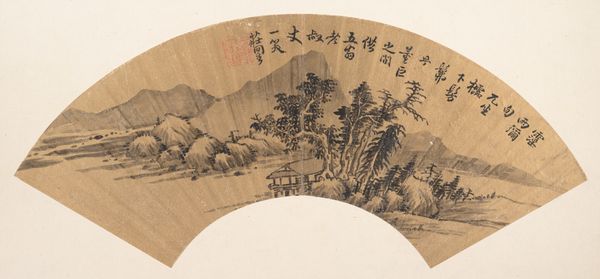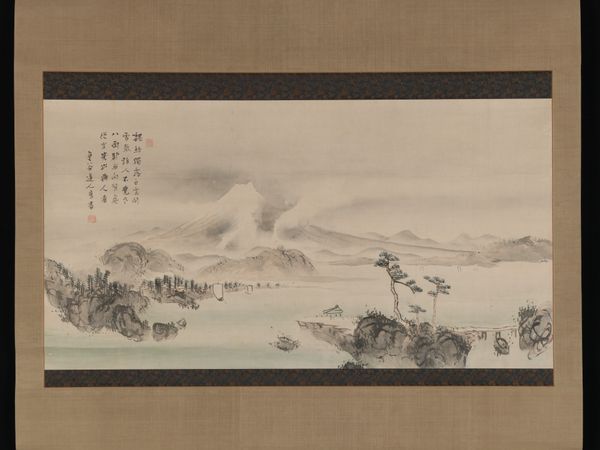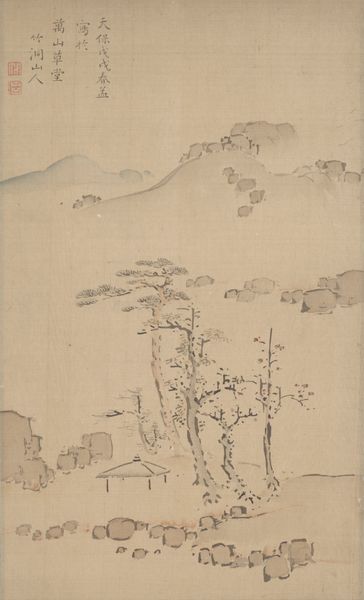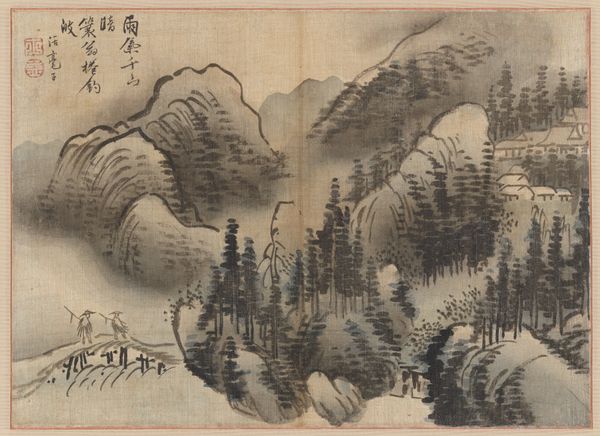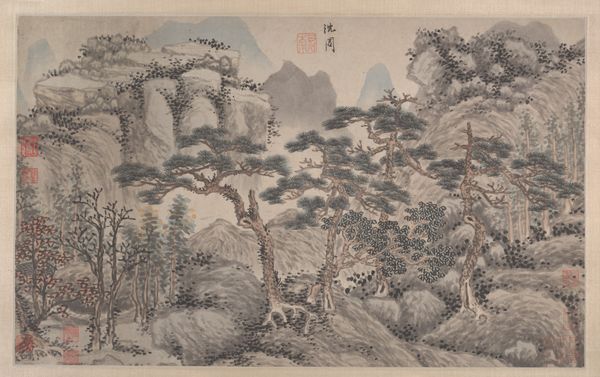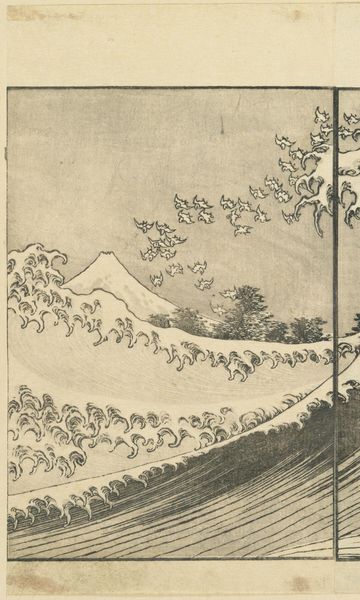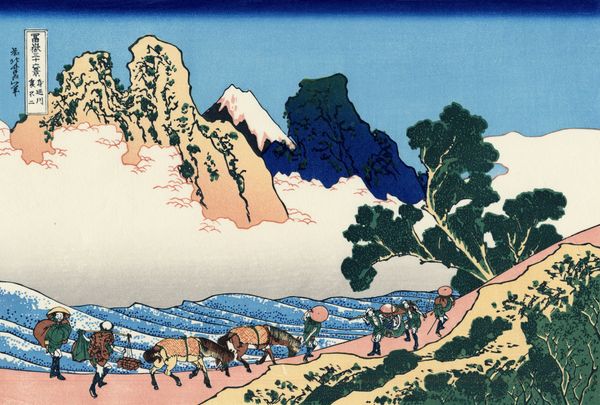
drawing, paper, ink, charcoal
#
drawing
#
asian-art
#
landscape
#
charcoal drawing
#
japan
#
paper
#
ink
#
geometric
#
charcoal
#
realism
Dimensions: Image: 12 3/4 × 19 5/8 in. (32.4 × 49.8 cm)
Copyright: Public Domain
Editor: So, we're looking at "Landscape," a drawing in ink and charcoal on paper attributed to Unkoku Tōban, dating somewhere between 1615 and 1699. It's a detailed rendering, almost photographic in its detail of the composition. How would you interpret its formal qualities? Curator: I am struck by the dynamism achieved within a seemingly restrained palette. Note the artist's command of line – the varying thicknesses, the deliberate angularity of the mountains contrasting with the softer curves of the bridge and the roofs. Consider how these lines structure the composition. Do you observe how the composition pulls our eye in different directions, both horizontal and into the depth of field? Editor: I do. The mountains really draw my eye upward, but there are smaller figures at the bottom near the village. It makes it a little unsettling and draws my eye into all directions, so where am I really looking? Curator: Precisely. This unsettling feeling arises from a deliberate manipulation of pictorial space. It denies the viewer a single, stable vanishing point, opting instead for a constellation of visual incidents that simultaneously invite and resist easy comprehension. Note how the mountains in the background use gray scale that is similar to elements of the buildings in the midground; it provides an overall visual cohesion, as the tones complement and highlight one another across the drawing, adding to the sense of depth, would you agree? Editor: I see that now! Is that kind of spatial manipulation characteristic of landscape art from this time? Curator: While not ubiquitous, it speaks to a broader artistic interest in destabilizing conventional perspectives and disrupting expectations of representational fidelity, as we move away from strict linear perspective and explore new methods. Editor: So by defying those expectations, it creates a sense of depth and realism, while playing with the surface texture and overall structure. That’s really interesting! Curator: Indeed. It is through such careful attention to formal relationships that this work transcends mere representation and engages in a deeper dialogue with perception itself.
Comments
No comments
Be the first to comment and join the conversation on the ultimate creative platform.
